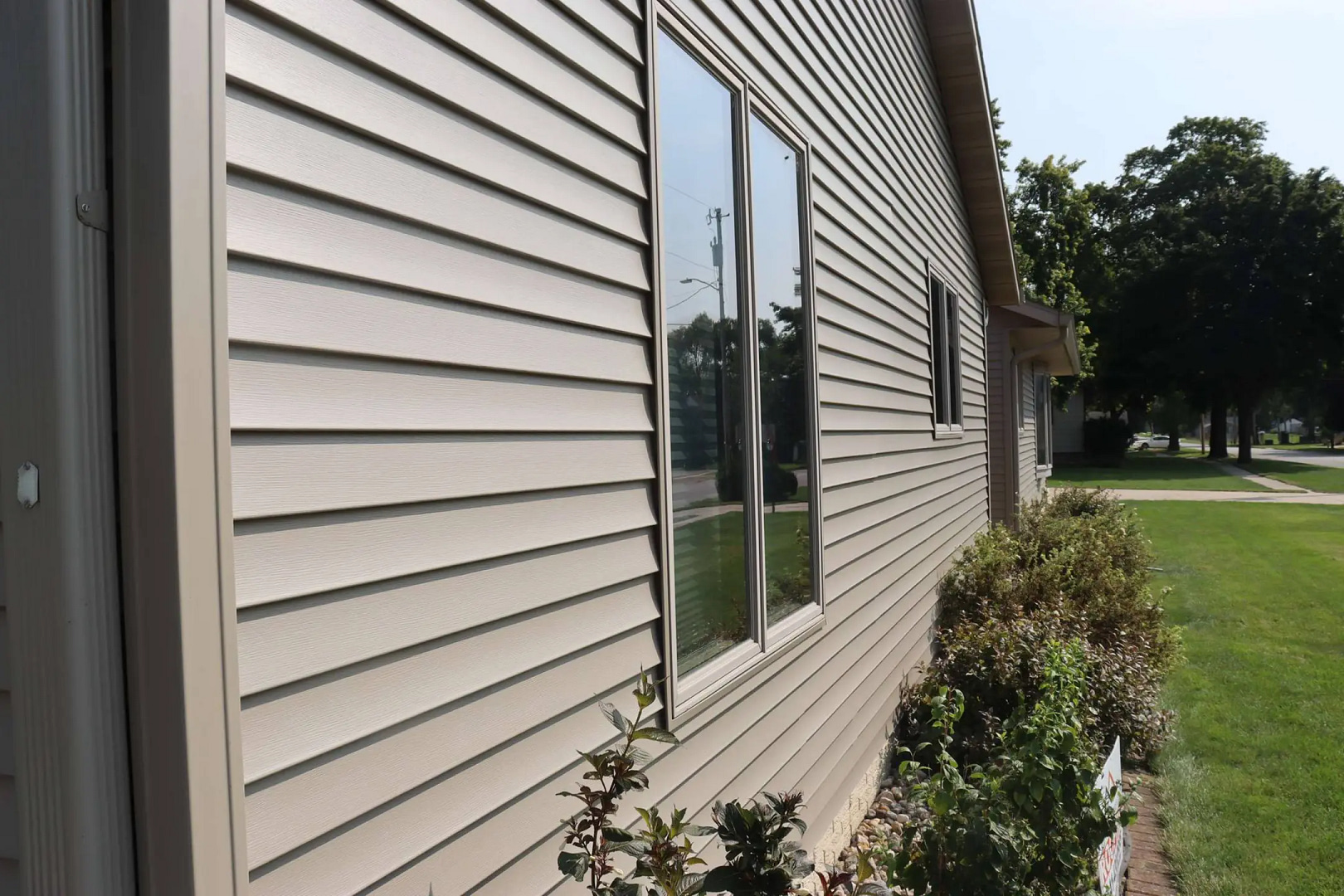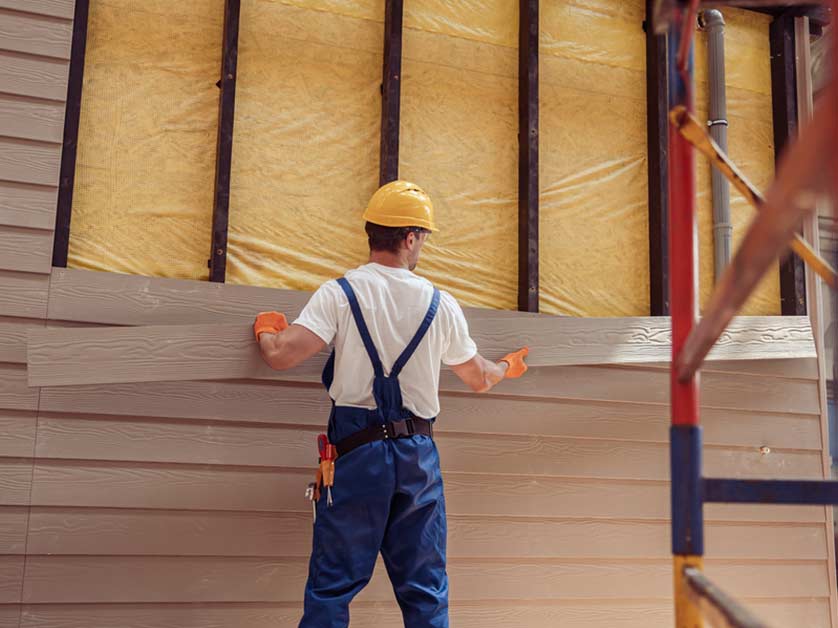The Important Overview to the Different Sorts Of House Siding and Their Special Benefits
In the realm of home enhancement, choosing the ideal home siding is an essential decision that impacts both aesthetic charm and functional performance. With so many options to consider, which exterior siding material truly stands out for your particular project?
Wood Exterior Siding
Wood exterior siding, a prominent option for property exteriors, uses an ageless aesthetic that integrates all-natural appeal with structural stability. This exterior siding material is offered in different designs, including clapboard, shingles, and board-and-batten, allowing property owners to personalize their appearance to match their layout preferences. Wood house siding is commonly crafted from long lasting species such as cedar, redwood, or pine, which are known for their strength and capacity to endure environmental stress factors.
One of the primary advantages of wood siding is its superb insulation homes, which can add to power effectiveness and lower heating costs. In addition, wood home siding is biodegradable, making it an eco-friendly choice when sourced sustainably. Regular upkeep, including painting or discoloration, can prolong its life expectancy and enhance its look, enabling property owners to protect the natural appeal of the timber.
Nevertheless, prospective drawbacks consist of susceptibility to parasites, rot, and weather damages, necessitating adequate treatment and maintenance - morris siding contractor. Despite these concerns, when appropriately looked after, wood house siding can provide a resilient and stunning service that improves the character of a home while using a cozy, welcoming ambience

Plastic Siding
Plastic house siding has become a leading option for house owners looking for a low-maintenance exterior alternative that integrates durability and cost. This versatile material is crafted from polyvinyl chloride (PVC), making it immune to various weather condition conditions, consisting of dampness and UV rays. Therefore, vinyl house siding does not warp, rot, or discolor, ensuring durable visual charm.
One of the primary advantages of vinyl house siding is its comprehensive series of shades and designs, enabling house owners to accomplish the wanted appearance for their home without the demand for constant repainting. Furthermore, vinyl house siding is very easy to install, which can significantly lower labor costs throughout building and construction or improvement projects.
Plastic home siding likewise adds to energy performance. Many alternatives function insulation backing, which enhances thermal efficiency, assisting to keep comfortable indoor temperature levels and possibly lowering energy bills. Moreover, its smooth surface area helps with very easy cleansing, requiring only regular cleaning with a yard tube to get rid of dust and debris.
Fiber Concrete Home Siding
Fiber cement siding has obtained traction among home owners and building contractors alike because of its impressive combination of sturdiness and visual adaptability. Composed of a mix of cement, sand, and cellulose fibers, this home siding choice is engineered to endure extreme climate condition, including high winds, hefty rainfall, and temperature level changes, making it a lasting selection for property exteriors.

One of the primary advantages of fiber concrete home siding is its resistance to pests, click resources such as termites, and its non-combustible nature, offering boosted fire security. morris siding contractor. In addition, it is offered in a broad selection of colors, appearances, and styles, permitting property owners to attain their wanted aesthetic without sacrificing efficiency
Another benefit is its reduced maintenance requirements; fiber concrete siding usually needs painting or discoloration every 5-10 years, which is less constant than various other products. Its longevity adds to a lower total cost of ownership, as it reduces the requirement for frequent repair services or replacements.
Eventually, fiber concrete exterior siding stands for an outstanding investment for those seeking a durable, eye-catching, and functional exterior choice, incorporating both form and feature to boost the home's aesthetic charm.
Steel Siding
The appeal of metal home siding hinges on its durable durability and modern aesthetic allure, making it a popular selection for modern style. Offered in materials such as aluminum and steel, metal siding provides a series of surfaces and shades, enabling property owners to achieve a customized look that complements their design vision.

Power effectiveness is another significant advantage, as many metal siding products are designed with insulation options that help control indoor temperatures. This can bring about lowered energy costs in time. Furthermore, steel siding is usually recyclable, making it an eco friendly option for sustainability-minded house owners.
The installment process for metal exterior siding can be fairly straightforward, leading to a quicker turnaround time for building and construction projects. In general, steel click this house siding integrates capability and design, making it a practical choice for those seeking a long-lasting and aesthetically appealing outside surface.
Brick and Stone Exterior Siding
Block and rock siding stands apart as a classic selection that boosts the visual charm of any type of home. Understood for their toughness and reduced upkeep, these materials supply a remarkable roi while elevating the property's curb charm. Readily available in numerous colors, textures, and patterns, block and rock can be tailored to match diverse architectural designs, from typical to contemporary.
One of the key advantages of block and rock house siding is their power efficiency. Both products have all-natural insulating residential or commercial properties that aid regulate indoor temperature levels, possibly minimizing cooling and heating expenses. Additionally, they provide premium fire resistance compared to other home siding options, adding to boosted safety and security.
Another benefit is their durability. Block and stone can last for decades, commonly requiring very little upkeep beyond occasional cleansing. Unlike wood house siding, they are invulnerable to pests and rot, guaranteeing a durable outside that withstands the elements.
Verdict
In summary, the option of house siding substantially affects a home's aesthetic appeal, power performance, and maintenance needs. Each kind of house siding-- whether timber, vinyl, fiber steel, cement, or block and stone-- supplies special benefits customized to various home owner preferences and ecological conditions.
One of the primary benefits click to read of timber exterior siding is its superb insulation residential properties, which can contribute to energy performance and lower home heating costs. Furthermore, timber exterior siding is eco-friendly, making it an environmentally friendly alternative when sourced sustainably.One of the primary advantages of steel siding is its resistance to different ecological aspects.Power effectiveness is an additional significant benefit, as numerous steel home siding items are developed with insulation alternatives that assist manage indoor temperatures. Each kind of siding-- whether wood, plastic, fiber concrete, brick, or metal and rock-- provides special advantages tailored to numerous homeowner preferences and ecological conditions.